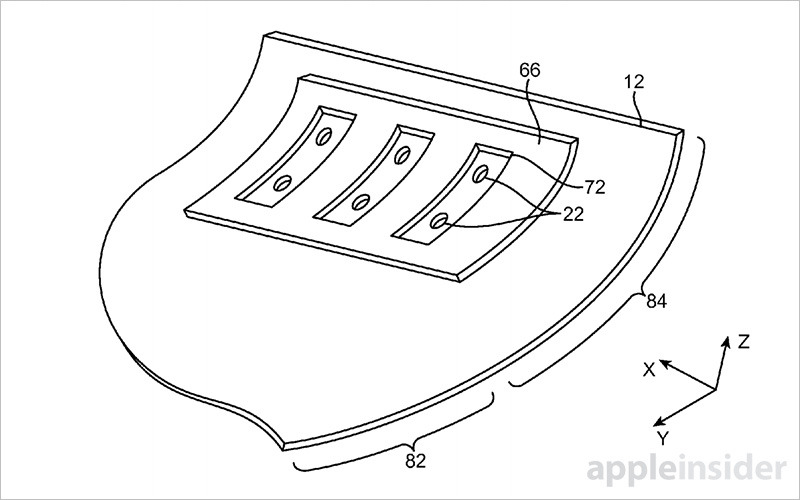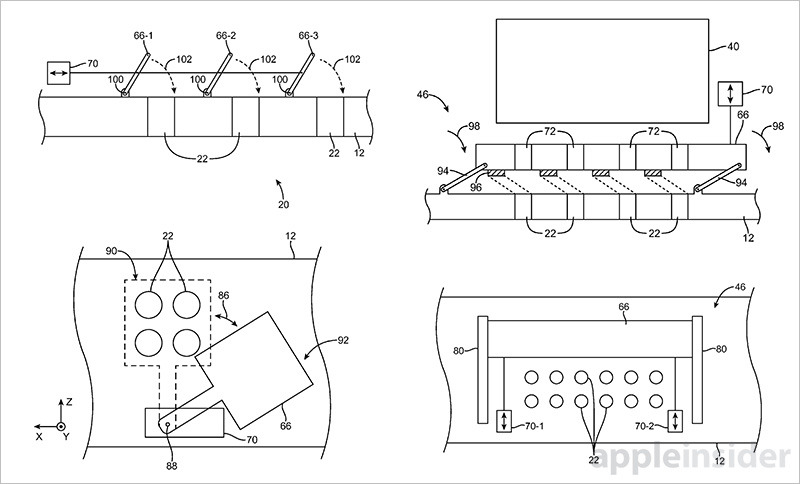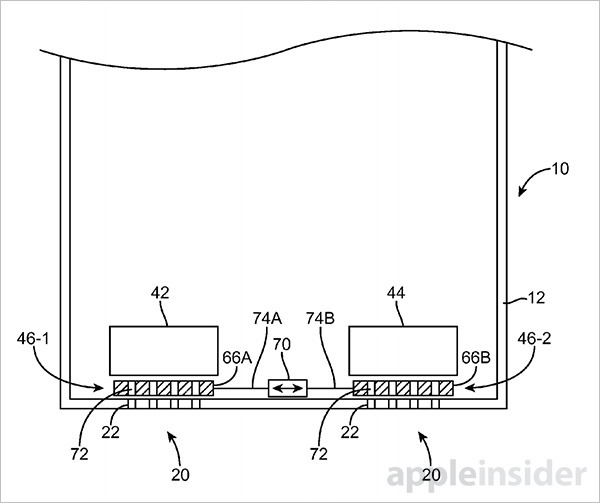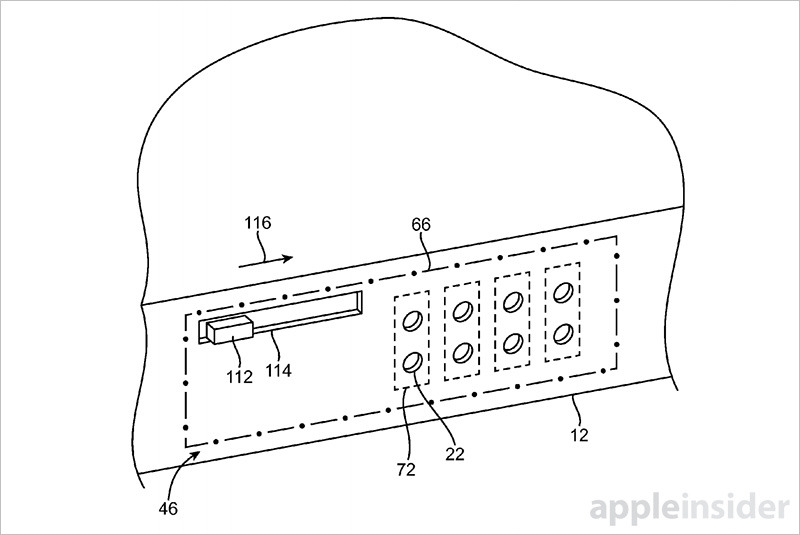An Apple patent application published Thursday details methods of implementing a powered shutter system that automatically blocks access to speaker, microphone and other iPhone and iPad port openings, protecting the sensitive components within.
As published by the U.S. Patent and Trademark Office, Apple's "Electronic devices with housing port shutters" application describes a system of electrically controlled shutters disposed over the openings of critical components like speaker boxes and microphones. At the command of an onboard logic, these shutter mechanisms can quickly block acoustic pathways — portholes — from damaging physical contaminants, potentially saving hundreds of dollars in repair costs.
Apple's invention can be applied to nearly any opening on an iPhone, from the headphone jack to the side-mounted SIM card slot. The document goes into detail on higher risk structures like an ear speaker or microphone, which in current designs have only a fine mesh standing between them and the elements.
In practice, multiple moveable shutter members or louvers are installed to align with openings in a device housing. On an iPhone 6s, for example, an effective shutter array protecting the down-firing system speaker would feature six slats, one for each round porthole. The idea is to seal off the air chamber when a speaker is not in use, thereby preventing ingress of liquid, dust and other contaminants.
Coupled to the shutter members, either individually or as an integrated mechanism, are movable positioners controlled by dedicated circuitry. Ideal embodiments for these components include solenoids, shape memory metals, piezoelectric actuators and the like. When activated by the central control logic, the positioner or positioners rotate, slide, pivot or otherwise move its attached shutter into position over a corresponding housing port.
In some embodiments, the shutter or shutter slats are curved to conform to similarly formed device walls, a design element liberally applied to Apple's most recent iOS devices. A silicone O-ring might also be installed on shutter edges, or integrated into the shutter itself, to achieve an air-tight seal.
Apple proposes employing sensing modules to detect the presence of moisture, airborne contaminants and other potentially detrimental environmental conditions that would warrant a state change from open to closed, or vice versa. The shutters might maintain a fully closed state, opening only when an event like a phone call or system alert requires speaker access. Alternatively, shutters could naturally maintain a fully open state, closing when onboard sensors detect an elevated risk of contamination.
In some cases users can activate shutters using voice commands or a dedicated onscreen GUI.
Finally, Apple's invention allows for an external switch to act as a manual override, handy for conserving energy or operating a shutter mechanism on a powered-down device.
While a novel invention, Apple's shutter mechanism is unlikely to make its way into a shipping product anytime soon. The company is already having difficulty cramming components into devices that grow increasingly thin with each successive design refresh. Today's patent application, however, is yet another indicator of Apple's recent interest in active protection systems, suggesting some type of advanced implementation could be in the offing.
Apple's active shutter patent application was first filed for in May 2014 and credits SungChang Lee, Kee Suk Ryu and Ki Myung Lee as its inventors.
 Mikey Campbell
Mikey Campbell








-xl-m.jpg)


-m.jpg)






 Thomas Sibilly
Thomas Sibilly
 Wesley Hilliard
Wesley Hilliard
 Christine McKee
Christine McKee
 Amber Neely
Amber Neely
 William Gallagher
William Gallagher
 Malcolm Owen
Malcolm Owen

 Mike Wuerthele
Mike Wuerthele








17 Comments
Nice idea, but seems rather too complex to be practical. But you never know, technology advances at a rapid pace...
Just put a thin layer of GoreTex in front of the vent ;)
Awaiting a similar announcement from Samsung within days.
Apple has never invented anything. I read this on the Internet.
[quote name="lkrupp" url="/t/190350/apple-invents-active-shutter-system-to-protect-iphones-from-liquid-contaminants#post_2810763"]Apple has never invented anything. I read this on the Internet. [/quote] lol...:D Ya.. I read on the internet that everything on the internet is true.. Cheers ;)